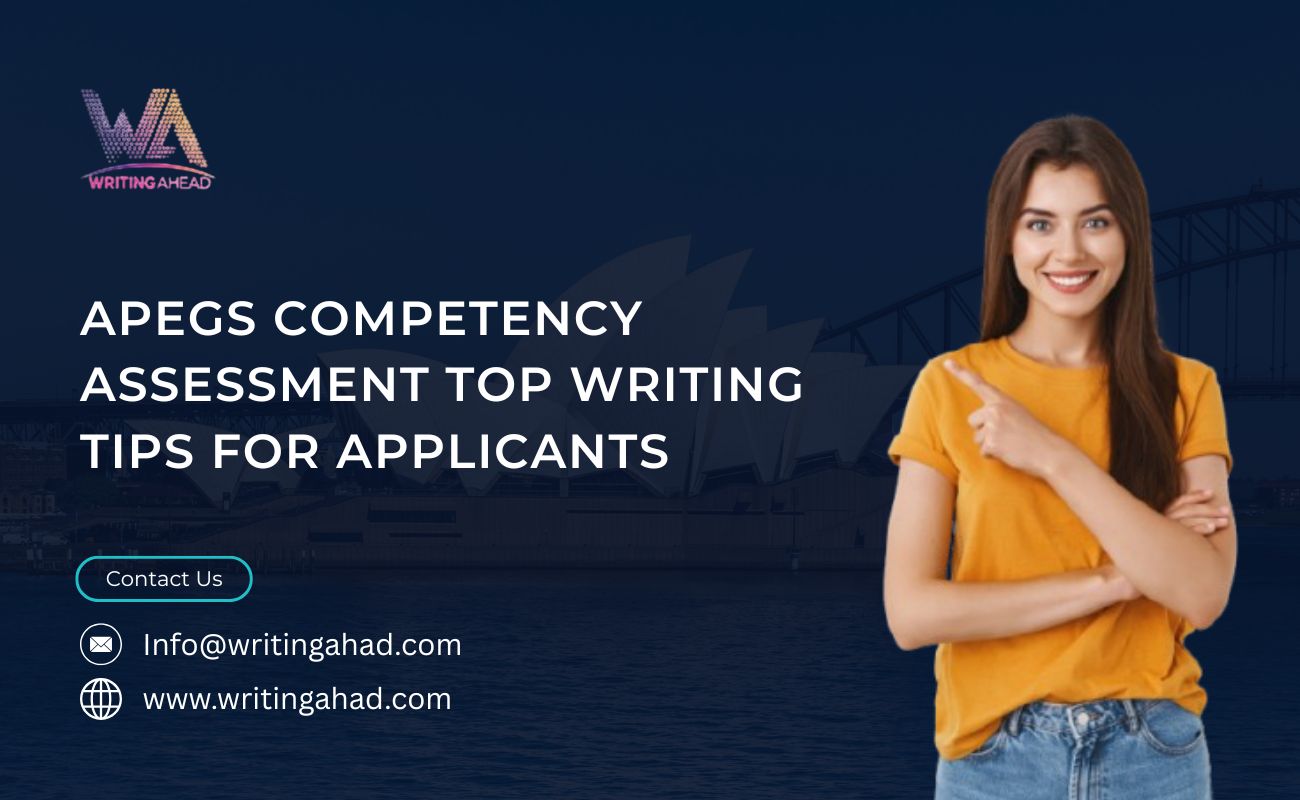Successfully completing the APEGS competency assessment is a vital step for individuals aiming to become licensed professionals through the Association of Professional Engineers and Geoscientists of Saskatchewan. The journey involves not only showcasing your technical experience but also mastering how to present it clearly and convincingly in your APEGS Report. This guide explores the top writing strategies that applicants can use to enhance their submission, avoid common pitfalls, and improve their chances of passing the assessment. These insights are tailored especially for Australian students and internationally trained professionals seeking registration.
Understanding the Importance of Clear Writing in APEGS Report
Why Writing Quality Affects the Competency Evaluation
Your ability to write clearly impacts how assessors understand your competencies. Even if you have outstanding engineering experience, poor writing may obscure your achievements. Since reviewers assess your professional capabilities based solely on your APEGS Report, the quality of your writing plays a critical role.
How Writing Influences Reviewer Confidence
Clarity, organization, and correct grammar demonstrate professionalism and attention to detail. When your writing is strong, reviewers can quickly find relevant evidence and feel more confident about your qualifications.
Structuring Your APEGS Report for Maximum Impact
Begin with a Competency-Aligned Outline
Before writing, create a detailed outline that aligns with the 34 competencies outlined by APEGS. Each section should correspond to a specific competency and focus on demonstrating how you’ve met the requirement through real work experience.
Craft Strong, Focused Paragraphs
Each paragraph should be purposeful. Start with a summary sentence, provide detailed context, describe the task, and explain your contribution. Avoid combining unrelated experiences in one paragraph. Keep your writing tightly connected to the competency at hand.
Use the STAR Method
Incorporate the STAR format—Situation, Task, Action, Result—for each competency example. This structure ensures logical flow and helps you stay focused on the core narrative. Reviewers can easily follow your actions and understand your impact when this method is used effectively.
Language and Tone Considerations in the APEGS Competency Assessment
Maintain a Formal, Professional Tone
Avoid casual or overly technical jargon unless it is essential to the project. Keep the language formal, concise, and professional. Assume that reviewers are technically literate but not necessarily experts in your specific field.
Use Active Voice and First Person
Passive constructions can make your role seem vague. Use the first-person active voice to highlight your involvement. For example, write “I designed the foundation system,” instead of “The foundation system was designed.”
Keep Sentences Short and Direct
Long, complex sentences can hinder clarity. Break down ideas into digestible parts. If a sentence covers more than two ideas, consider splitting it into multiple ones. Aim for clarity over style.
Choosing the Right Examples to Include in Your APEGS Report
Select Examples with Depth, Not Just Breadth
It is better to go deep into a few experiences than to superficially cover many. Reviewers want to understand your thought process, decision-making ability, and problem-solving skills. Choose examples that showcase a meaningful impact.
Ensure Examples Reflect Your Role Clearly
Do not use team efforts as examples unless your specific contributions are unmistakable. Avoid vague language like “we did” or “the team completed.” Use “I” to clarify your individual role in the project and ensure reviewers can accurately assess your work.
Match Examples to the Correct Competency
Each competency has a unique focus. Avoid reusing the same example for multiple unrelated competencies unless it clearly applies to both. Take time to understand what the assessors are looking for under each criterion and choose accordingly.
Enhancing Technical Depth Without Losing Readability
Balance Technical Detail with Understandability
Include relevant technical content but avoid overloading the reader. Describe the problem, your approach, and your solution using clear terms. If abbreviations or specific tools are necessary, explain them briefly.
Show Analytical Thinking, Not Just Actions
Mentioning what you did isn’t enough. Describe why you made certain decisions, what alternatives you considered, and what you learned. This reflective thinking helps reviewers understand your professional maturity and problem-solving process.
Editing and Reviewing Your APEGS Report
Revise Thoroughly and Repeatedly
No draft is perfect. Review your APEGS Report multiple times to refine language, improve structure, and correct inconsistencies. Look for repetition, verbosity, or unclear phrasing that may confuse assessors.
Seek Feedback from a Trusted Colleague
Have a peer, preferably someone with experience in APEGS or another professional assessment process, review your report. They can identify gaps, unclear parts, and suggest improvements. Avoid relying on generic editing tools, which may miss context-specific nuances.
Proofread for Grammar, Spelling, and Punctuation
While content is the priority, grammatical errors and poor formatting can distract assessors. Use grammar-checking tools for final reviews but also do a manual read-through to ensure flow and correctness.
Common Pitfalls to Avoid in the APEGS Competency Assessment
Avoid Copy-Pasting from Job Descriptions
Job descriptions do not show how you applied knowledge or solved problems. Your APEGS Report should focus on your actions, not a general summary of duties. Always personalize your content.
Don’t Leave Out the Outcome
Always include the result of your actions. Whether it’s a solved problem, improved efficiency, or reduced risk, reviewers want to see the end effect of your work. Ending a section without a result weakens your case.
Resist the Urge to Overstate
Stay truthful. Inflated claims or exaggerated results may raise red flags. Stick to facts and present them confidently. Honesty, clarity, and realism always win over vague or overly grand statements.
Tailoring Your Writing Style for the APEGS Competency Framework
Align Tone with Each Category Type
For technical competencies, emphasize technical reasoning and execution. For communication and management competencies, highlight interpersonal skills, clarity, and leadership. Adapting your tone and detail level to match the competency type can enhance reviewer engagement.
Demonstrate Professional Growth Throughout
If possible, structure your examples to show how your responsibilities and thinking evolved over time. This progression demonstrates your learning, adaptability, and readiness for professional licensure.
Final Submission Tips for Your APEGS Report
Ensure Consistency Across Competencies
Inconsistent formatting, writing tone, or terminology can disrupt flow. Keep a consistent structure and style across all 34 competencies to make the document more professional and readable.
Double-Check the APEGS Submission Guidelines
Before submission, review the latest guidelines from APEGS to ensure your format, word count, and example types align with current expectations. Disregarding format rules can lead to rejections or delays.
Conclusion
Writing a strong APEGS Report is not just about documenting your engineering experience—it’s about strategically showcasing your competencies in a way that aligns with the expectations of the apegs competency assessment reviewers. Clear structure, thoughtful reflection, detailed examples, and professional tone are all essential elements of success. By following the top writing tips in this article, applicants can create a compelling, polished report that stands out for all the right reasons. Remember, the goal is not to impress with complexity but to communicate your qualifications with clarity and precision.
FAQs
How long should each competency example be in the APEGS Report?
Each example should be concise yet complete, typically around 250 to 400 words. It should fully address the competency through STAR format while avoiding unnecessary details that don’t add value.
Can I use one project to cover multiple competencies in the assessment?
Yes, one project may be used to address several competencies if it contains diverse activities. However, your responses must clearly distinguish your contributions and ensure that each competency is addressed distinctly.
What’s the biggest mistake applicants make in the APEGS Report?
The most common mistake is failing to show personal responsibility. Using passive voice or focusing on team efforts without highlighting individual contributions often leads to unclear evaluations or rejections.
How important is grammar and formatting in the APEGS competency assessment?
While content matters most, grammar and formatting reflect your professionalism. Clear language, proper punctuation, and consistent formatting help reviewers focus on your experience, improving your overall impression.
Should I include unsuccessful projects or challenges in my APEGS Report?
Yes, if those experiences showcase problem-solving, resilience, or learning. Challenges often reveal professional maturity. Just be sure to explain what you did, what you learned, and how the situation concluded.


